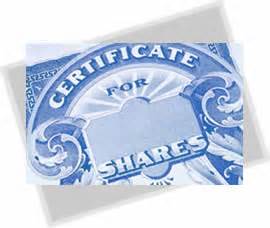US Stock Ownership Hits a New Record Low
Thursday, January 16th, 2014 @ 6:30PM
Between the Lines
by Gary D. Halbert
In 2013, a Gallup survey found that stock ownership, even in retirement accounts, had reached a record low of only 52% of Americans, down from 62% five years prior and 65% in 2007. The latest number is the lowest since Gallup began its bi-annual survey in 1998.
The sharpest decline is among middle-income Americans, classified as those earning between $30,000 and $75,000. In 2008, about 66% of middle class Americans owned stocks, compared to just 50% now (more on this below).
Between 2008 and 2012, individual investors yanked more than $500 billion from US stock mutual funds, while adding more than $1 trillion to bond funds during the same period, according to Investment Company Institute which tracks fund flows. Investors continued to drain money – another $55+ billion – from US stock funds last year through September.
But then a funny thing happened in October, November and December. As the markets were soaring to new record highs, inflows to domestic stock mutual funds started to rise in the final three months of last year. Inflows into domestic equity ETFs also saw a big increase late year when the market hit new highs… Selling low and buying high.
In general, the country’s wealthiest families typically have hundreds of thousands of dollars or more in stocks. Yet middle- and lower-income households typically have relatively small investments – if they have anything at all – leaving millions of Americans with little or no benefit from the greatest bull market in stocks ever.
How can this possibly be? Many investors were scared out of stocks and stock funds in the bear market of late 2007 to early 2009 when the S&P 500 Index plunged over 50%. Now, these investors may be staying out of stocks because they fear another market crash. Others fear that the 30+% rally in the S&P 500 last year means that most of the bull market is behind us.
Yet in many cases, low- and middle-income Americans simply don’t have any extra money to invest. More than 80% of households earning more than $75,000 a year are invested in stocks, compared to just 21% of households making less than $30,000 a year, according to the Gallup survey. Meanwhile, only 50% of those earning between $30,000 and $74,999 own stocks.
Since the bottom in March of 2009, we have seen the greatest bull market in stocks on record. The S&P 500 Index has more than doubled over that period. Yet most Americans have seen little financial benefit from this huge run-up in equity prices because they have little skin in the stock market game according to the latest survey. Gallup said this on its website:
“Although the stock market is on a tear, creating new wealth for millions
currently invested in it, nearly half of U.S. adults are on the sidelines. That
may be particularly irksome to the middle-income and young middle-aged
Americans who were previously invested [prior to the market crash in 2008].”
Here are the numbers from the latest Gallup survey:
What this survey shows is that almost half of Americans have no investment in stocks today, down from 62% that had stock market investments before the market meltdown in 2008. This poll also shows that the vast majority (81%) of Americans who have stock market investments are in the income category that makes $75,000 or more.
What it also shows is that the majority of Americans (55%) who own stocks or stock-related investments are white, versus only 45% who are minorities. While the 45% minority number is disappointing, it does represent a significant improvement in recent years.
A 2013 Pew Research Center survey found that those with college degrees are significantly more likely to have money in the stock market (77%), compared to those with at most a high school diploma (25%).
In 2010, the median value of family stock investments was a mere $29,000, according to the Federal Reserve Survey of Consumer Finances, the most recent available year for that survey. Meanwhile, the top 10% of families had a median investment value of roughly $268,000.
Those figures are likely up significantly thanks to the strong market returns of the past few years. Retirement savers of all incomes have seen their equity balances more than double in the past five years, according to an analysis of 1.4 million accounts by Fidelity Investments.
Yet the fact remains that millions of investors bailed out in 2008 at the worst of times and have yet to get back in. This means that most of them lost money and then missed the greatest bull market in history. That’s why I recommend that most people should use professionals to manage most of their investments.
Posted by AIA Research & Editorial Staff
Categories: Between the Lines




